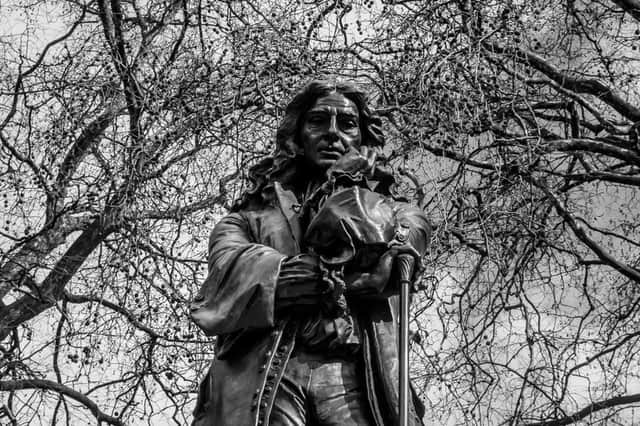Who was Edward Colston? Why Black Lives Matter protesters pulled down the slave trader's statue - and what will happen to it


While the “vast majority” of the protests were peaceful, police have launched an investigation after a group of protesters in Bristol tore down a controversial statue of 17th century slave trader, Edward Colston.
Who was Edward Colston?
Edward Colston was a wealthy businessman who traded in woollen textiles and wine, and was involved in Britain’s slave trade past.
Advertisement
Hide AdAdvertisement
Hide AdHe joined the London-based Royal African Company in 1673, which at the time had the monopoly of Britain’s slave trade, and later took on the role of deputy governor in 1689.
By this time, the company had transported around 100,000 enslaved Africans in chains to the Americas, all of whom had been branded with the firm’s initials RAC on their chests.
Due to the unhygienic and cramped conditions, many who were enslaved died on their journey, with their bodies said to have been thrown overboard.
Why did Colston have a statue?
The 18ft bronze statue of Edward Colston was built as a memorial to his philanthropic works, and has stood on Colston Avenue in Bristol city centre since 1895.
The inscription on the statue read: “Erected by citizens of Bristol as a memorial of one of the most virtuous and wise sons of their city.”
Before his death in 1721, Colston donated money to many causes in the city, including funds to sustain schools, churches, founding almshouses, Queen Elizabeth’s Hospital School, and founding a religious school for boys.
His legacy has seen him honoured in many places around the city, with streets and buildings bearing his name.
However, his involvement with the slave trade was the source of much of the money which he bestowed into the city, according to Historic England.
Advertisement
Hide AdAdvertisement
Hide AdDespite being born in Bristol in 1636, Colston did not live there as an adult and conducted all of his slave trading in the city of London.
Why did protesters tear the statue down?
Anti-racism demonstrators tore down the statue of Colston on 7 June for his involvement in the slave trade.
The statue was pulled down after crowds of demonstrators left the city’s College Green and was later dumped into Bristol harbour.
While the move comes almost 300 years since his death, campaigners have expressed anger in recent years over the commemoration of a figure so prominently involved in slavery and exploitation.
Campaign group Countering Colston has also called for an end to Bristol “publicly celebrating” such a controversial figure, and the statue has been the subject of an 11,000-strong petition to have it removed.
Around 10,000 people took part in the Black Lives Matter protests in the city, with police praising the majority for being “peaceful and respectful”.
While no arrests have been made, Avon and Somerset police are now collating footage of a “small group of people” who caused criminal damage after being filmed tearing down the statue with ropes.
In a statement, Bristol’s mayor Marvin Rees said that the removal of the statue would “divide” opinion, but acknowledged the importance of listening to those who felt the statue served as a reminder of slavery, racism and inequality.
The statue has now been retrieved from Bristol Harbour by the city council and has been taken to a “secure location”, and it will later form part of its museums collection.
